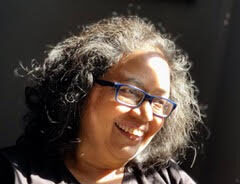Tell us about some important projects that your studio was involved in just before the lockdown.
Around the time of the lockdown, we had the Conservation of the Scottish Cemetery in Kolkata and Revitalization of the AJC Botanical Garden, Howrah, ongoing, alongside three large scale housing projects in Lucknow and two houses in Kolkata.
Which were the biggest challenges and fears you faced because of the lockdown?
The biggest challenges we faced were lack of funds for the projects and lack of manpower, both on the site and in the studio.
What were the challenges you faced with the monetary flow in your practice and how are you handling them?
Since we had no inflow of funds from some projects, we had to reduce the monthly salaries of our team.
How are you strategizing to adapt to the new conditions of work upon resumption of office post the lockdowns?
Our previously existing conventions of work are resuming as we are now back to the normal team strength. The team has also started to receive the original salary structure.
Were any new methods of work evolved during the lockdown?
Online Meetings have become common now after the pandemic.
How were the coordination issues resolved with the studio staff and on-site team?
Even though we had adapted to virtual methods of working, we have realized that site work cannot be done without physical visits and meetings.
What were the biggest learnings from the pandemic? And which decisions and new work methods you feel your studio will continue with for the future?
It is impossible to have a completely work-from-home situation for architectural practice. There can only be a small set of tasks that can be assigned for work-from-home.
How have your contractors and labour network been influenced by the lockdown and what measures have you made to sustain or revive them?
We continued to pay our workers, especially the labour-force, masons, and supervisors, during the pandemic.
This helped with supporting them and also to retain them.
Are you involved in any off-studio/allied initiatives such as office collaborations, NGO and social projects, working with authorities, photography, writing, research, conservation, etc.? How were these initiatives influenced by the lockdown, and how are you handling them?
Yes, I am involved in all of the above except for works related to travelling. My practice did not experience any problem from the pandemic in these areas of work.
About the practice:
Please let us know about the founding year, principals, team and studio.
Principal architects Neeta Das and Shubhrajit Das founded their architectural studio in 1987. The firm is a proprietorship firm with several associates. The firm has handled various conservation and design projects, both big and small. In all the projects the office strives towards perfection in terms of efficient planning, economical consideration in the design, and simple uncluttered aesthetics.
Neeta Das is a graduate in Architecture (1987) from CEPT, Ahmedabad. She has also completed her M.S. (Arch.) in Architectural History, Criticism and Pedagogy (1995) from the University of Cincinnati, USA. Neeta Das holds a PhD from SPA Delhi and Lucknow University (2004) and she is also a specialist in conservation with recognition from the Society for the Protection of Ancient Buildings, London (2004) and Scottish Lime Center, Charlestown (2013 & 2015). In 2012, she was awarded the Post Doctoral Fellowship by the Indian Council for Historical Research, New Delhi.
What are some of the processes and work methods unique to your practice?
Neeta Das handles Urban Conservation projects and Shubhrajit Das handles Design projects, especially bespoke houses and housings. A prolific writer, Neeta Das has authored and co-authored several books on the 18th and 19th-century architecture and their conservation, for Prestel, Marg, Times of India, INTACH, and other publishers. It is commonly seen that children do not like studying history of any sort. But they are also the future citizens of India and need to be aware of their rich heritage. Keeping this in mind three short stories, Hap’pant meets Asfu Dadu, Where is my Mother, Slowly down the Rajpath, were written by Das about the heritage buildings of Lucknow in a simple but interesting manner with colourful illustrations.







